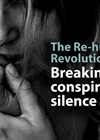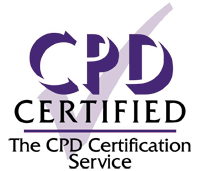Some leaders build empires. Others build people. And some tear the whole thing down to rebuild it better.

The archetypes of power
Leadership in healthcare is evolving. Traditional command-and-control structures are evolving into team-based, emotionally intelligent and adaptive approaches. Yet an enduring question remains: what kind of leadership does modern healthcare demand? To explore this, we examine three leadership archetypes through the lens of iconic figures:
- ‘The Commander’ Napoleon Bonaparte: strategic, forceful and precise.
- ‘The Coach’ Mahatma Gandhi: relational, empowering and service-driven.
- ‘The Catalyst’ Steve Jobs: disruptive, visionary and boundary-pushing.
Each model offers insights – and limitations – for healthcare systems today. These models are not merely abstract ideals; they correspond to real-world leadership behaviours seen in clinical, operational and strategic domains. Understanding these archetypes helps clinicians, managers and policy-makers frame their leadership development with greater clarity.
The Commander: Precision under pressure
Napoleon exemplified top-down leadership, with centralised control and rapid decision-making. In healthcare, this archetype fits crisis settings: managing trauma teams, pandemics, or surgical logistics. During the Covid-19 pandemic, for example, command-style leadership helped mobilise resources quickly and implement nationwide protocols.
Commanders offer clarity when ambiguity is dangerous. They ensure consistency, streamline communication and promote accountability. Research by Anderson and Sun suggests that transactional and directive leadership can be essential in high-pressure environments requiring strict adherence to policy [1].
In clinical governance, the Commander model supports rigorous safety protocols and compliance standards. Leaders operating in this style are often the ones pushing for performance targets, efficient workflows, and standard operating procedures. While these goals are important, they must be balanced by fostering a sense of purpose and autonomy within the team.
However, excessive reliance on command-style leadership outside of crises risks alienating staff and reducing creativity. Rigid hierarchies can inhibit bottom-up innovation and prevent frontline feedback from informing strategic decisions. Healthcare systems that are slow to adapt or that stifle clinical autonomy often reflect this pitfall.
Furthermore, studies show that sustained exposure to hierarchical decision-making without inclusion or recognition can reduce staff morale, increase absenteeism, and lead to emotional exhaustion [2]. Thus, command leadership must be complemented by emotionally intelligent engagement strategies.
The Coach: Power through empowerment
Gandhi’s moral clarity and empathy illustrate the Coach archetype. Coaching leaders cultivate psychological safety, mentorship, and autonomy – critical in emotionally demanding clinical settings. They see leadership as a relational practice, not a directive one.
Evidence supports this: authentic and compassionate leadership improves staff satisfaction, collaboration and patient safety. Alilyyani, et al. found that authentic leadership positively influences psychological capital and organisational commitment in nursing teams [3]. It has also been linked to decreased turnover rates, improved communication and stronger patient outcomes.
Coaching enables the development of high-functioning teams by fostering a culture of openness and trust. In multidisciplinary environments, where mutual respect and shared decision-making are essential, this leadership style becomes a foundation for performance. Leaders who coach rather than command can also foster more effective succession planning, investing in future talent within the organisation.
"Most effective healthcare leaders blend all three archetypes, adjusting their approach depending on context"
This style also supports trauma-informed care and the emotional wellbeing of healthcare workers. As burnout and moral injury become growing concerns, coaching offers a sustainable antidote by humanising the leadership relationship and enhancing mutual accountability [4].
However, coaching can falter in emergencies requiring swift decisions. In such moments, the deliberative pace and consensus-driven nature of coaching may delay action. Still, as healthcare becomes increasingly relational and patient-centred, Gandhi-style leadership is proving both ethical and effective.
The Catalyst: Disruption by design
Steve Jobs led through innovation, challenging norms and prioritising user-centred excellence. Catalyst leaders are vital in healthcare transformation – implementing technology, redesigning services and driving culture change. They are the visionaries who challenge “the way things have always been done” and who reimagine patient care experiences.
Entrepreneurial leadership, defined by Renko, et al., involves opportunity recognition, innovation with calculated risk, and the ability to align teams around a vision [5]. This style is particularly valuable in digital health transformation, where leaders must navigate complexity, regulatory change and rapid technological shifts.
The Catalyst archetype is increasingly relevant in healthcare’s transition toward value-based care and precision medicine. These shifts require leaders who are not only tech-literate but capable of redesigning pathways and partnerships. Innovation hubs, health accelerators, and start-ups within NHS ecosystems often embody this leadership archetype.
Jobs embodied an intense drive for excellence, but also demonstrated how such visionary leadership, if untempered, can lead to burnout and disengagement among team members. Anderson and Sun caution that transformational leadership, while inspiring, must be balanced by relational leadership to avoid unintended consequences [1].
Healthcare organisations led by Catalysts must ensure their disruptive innovations are embedded within inclusive and ethical frameworks, considering not just what is possible, but what is sustainable and equitable. As Ackerman, et al. argue, innovation must be accompanied by a leadership mindset capable of navigating systemic resistance and co-designing with frontline stakeholders [6].
Blended models: Adaptive leadership in practice
Most effective healthcare leaders blend all three archetypes, adjusting their approach depending on context. Adaptive leadership requires self-awareness, flexibility, and the ability to read both organisational and emotional cues:
- Command in crisis
- Coach in development
- Catalyse during transformation
Daniel Goleman’s framework of emotional intelligence highlights key capabilities such as self-regulation, motivation, empathy, and social skill – all of which are vital for navigating the interpersonal dynamics of healthcare leadership [7].
Adaptive leaders do not fit neatly into a box. They navigate bureaucratic complexity, team morale, patient demands and regulatory pressures by toggling between styles. In doing so, they promote resilience, responsiveness and trust.
Blended models also allow leaders to challenge their own assumptions and unconscious biases. Programmes that combine coaching with real-time situational feedback have shown greater efficacy in developing authentic, flexible leaders who can respond with both conviction and compassion [8].
Developing future leaders
Leadership is not a trait but a learned skill. Developing effective leaders requires structured frameworks, reflective practice and ongoing feedback. Two commonly used tools are:
- The Multifactor Leadership Questionnaire (MLQ): Developed by Bass and Avolio, this tool evaluates transformational, transactional and passive-avoidant leadership behaviours [9]. It allows leaders to reflect on their style and its impact on others.
- The Authentic Leadership Questionnaire (ALQ): Designed to assess relational transparency, internalised moral perspective, and balanced processing, the ALQ helps identify ethical and emotionally intelligent leadership traits [10].
In the UK, the NHS Leadership Academy supports tiered leadership development with tools such as 360-degree feedback, structured mentorship and values-based assessment. These initiatives aim to embed leadership at every level of the organisation.
Interprofessional programmes, like Collaborative Leadership in Health, promote systems thinking and shared responsibility across professions. Such training encourages collective ownership and dismantles siloed decision-making [11].
More recently, leadership development has integrated complexity science, recognising the unpredictable and non-linear nature of healthcare systems. Leaders must be equipped to manage uncertainty, foster innovation and co-create adaptive solutions [6]. This perspective moves away from command-and-control and toward responsive governance.
Additionally, leadership fellowships, clinical leadership networks, and multi-institutional mentorship schemes have proven effective in preparing future leaders with real-world experience. As digital and global health challenges continue to evolve, leadership frameworks must remain dynamic and interdisciplinary.
Conclusion
In a sector where the stakes are life, death, identity and innovation, leadership must be intentional and context-sensitive. The Commander, the Coach, and the Catalyst offer compelling archetypes, but none are sufficient in isolation.
Healthcare doesn’t need another Napoleon, Gandhi, or Jobs – it needs leaders who can channel each when the moment demands. The future of healthcare leadership lies in adaptability, integrity and collaborative innovation.
Further reading
• NHS Leadership Academy:
www.leadershipacademy.nhs.uk
• The King’s Fund – Leadership Resources:
www.kingsfund.org.uk
• Harvard Business Review – Leadership Hub:
https://hbr.org/topic/leadership
• Goleman D. Emotional Intelligence. Bantam Books; 1995.
• Bass BM, Avolio BJ. Improving Organizational Effectiveness through Transformational Leadership. SAGE Publications; 1993.
References
1. Anderson MH, Sun P. Reviewing leadership styles: Overlaps and the need for a new ‘full-range’ theory. Int J Manag Rev 2017;19(1):76–96.
2. Laschinger HKS, Wong CA, Grau AL. The influence of authentic leadership on newly graduated nurses’ experiences of workplace bullying, burnout and retention outcomes: A cross-sectional study. Int J Nurs Stud 2012;49(10):1266–76.
3. Alilyyani B, Wong CA, Cummings GG. Antecedents, mediators, and outcomes of authentic leadership in healthcare: A systematic review. Int J Nurs Stud 2018;83:34–64.
4. West M, Eckert R, Collins B, Chowla R. Caring to change: How compassionate leadership can stimulate innovation in healthcare. The King’s Fund 2017:
https://www.kingsfund.org.uk/insight-and-analysis/reports/caring-change
[last accessed 9 July 2025]
5. Renko M, El Tarabishy A, Carsrud AL, Brännback M. Understanding and measuring entrepreneurial leadership style. J Small Bus Manag 2015;53(1):54–74.
6. Ackerman M, Malloch K, Wade D, et al. The Master in Healthcare Innovation: A new paradigm in healthcare leadership development. Nurse Leader 2019;17(1):49–50.
7. Goleman D. Leadership That Gets Results. Harv Bus Rev 2000;78(2):78–90.
8. Stefaniak J, Bailey L. Mentorship and coaching models for leadership development: An integrative literature review. J Leadersh Educ 2020;19(2):146–66.
9. Avolio BJ, Bass BM. Multifactor Leadership Questionnaire Manual. Mind Garden Inc; 2004.
10. Walumbwa FO, Avolio BJ, Gardner WL, et al. Authentic leadership: Development and validation of a theory-based measure. J Manag 2008;34(1):89–126.
11. Careau E, Biba G, Brasset-Latulippe A, et al. Health leadership education programs: A review of the literature. J Health Organ Manag 2014;28(1):124–42.
Declaration of competing interests: None declared.











